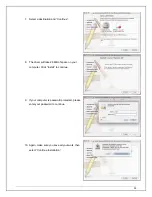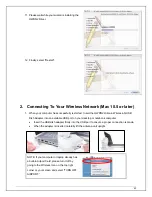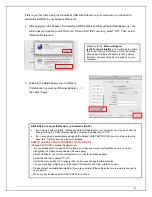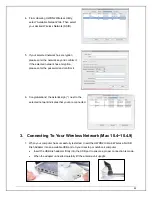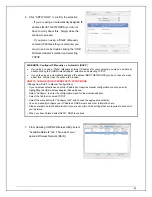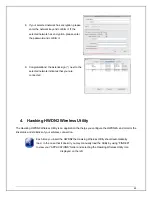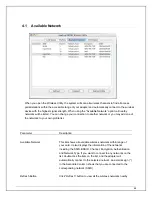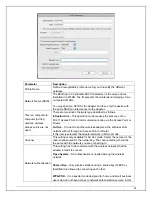
49
mode, known as Pre-Shared Key, the user manually enters the starting
password in their access point or gateway, as well as in each wireless
station in the network. WPA-PSK takes over automatically from that
point, keeping unauthorized users that don’t have the matching
password from joining the network, while encrypting the data traveling
between authorized devices.
WPA2-PSK
– WPA2-PSK is also for home and small business. The
difference between WPA-PSK and WPA2-PSK is that WPA2-PSK
provides data encryption via the AES. In contrast, WPA-PSK uses
Temporal Key Integrity Protocol (TKIP).
WPA 802.1X
– WPA provides a scheme of mutual authentication using
either IEEE 802.1x/Extensible Authentication Protocol (EAP)
authentication or pre-shared key (PSK) technology. It provides a high
level of assurance to enterprises, small businesses and home users that
data will remain protected and that only authorized users may access
their networks. For enterprises that have already deployed IEEE 802.1x
authentication, WPA offers the advantage of leveraging existing
authentication databases and infrastructure.
WPA2 802.1X
– Like WPA, WPA2 supports IEEE 802.1 x/EAP
authentications or PSK technology. It also includes a new advanced
encryption mechanism using the Advanced Encryption Standard (AES).
AES is required to the corporate user or government users. The
difference between WPA and WPA2 is that
WPA2 provides data encryption via the AES. In contrast, WPA uses
Temporal Key Integrity Protocol (TKIP).
WEP 802.1X
– It’s a special mode for using IEEE 802.1x/EAP
technology for authentication and WEP keys for data encryption.
Data Encryption
Disabled
– Disable the WEP Data Encryption.
WEP
– Enable the WEP Data Encryption. When the item is selected,
you have to continue setting the WEP Encryption keys.
TKIP
– TKIP (Temporal Key Integrity Protocol) changes the temporal key
every 10,000 packets (a packet is a kind of message transmitted over a
network.) This insures much greater security than the standard WEP
security. (Note: This mode is not certified. Performance may vary under
this setting.)
AES
– AES has been developed to ensure the highest degree of
security and authenticity for digital information and it is the most
advanced solution defined by IEEE 802.11i for the security in the
Summary of Contents for Hi-Gain
Page 1: ......
Page 10: ...10 f Congratulations you are now successfully connected ...





